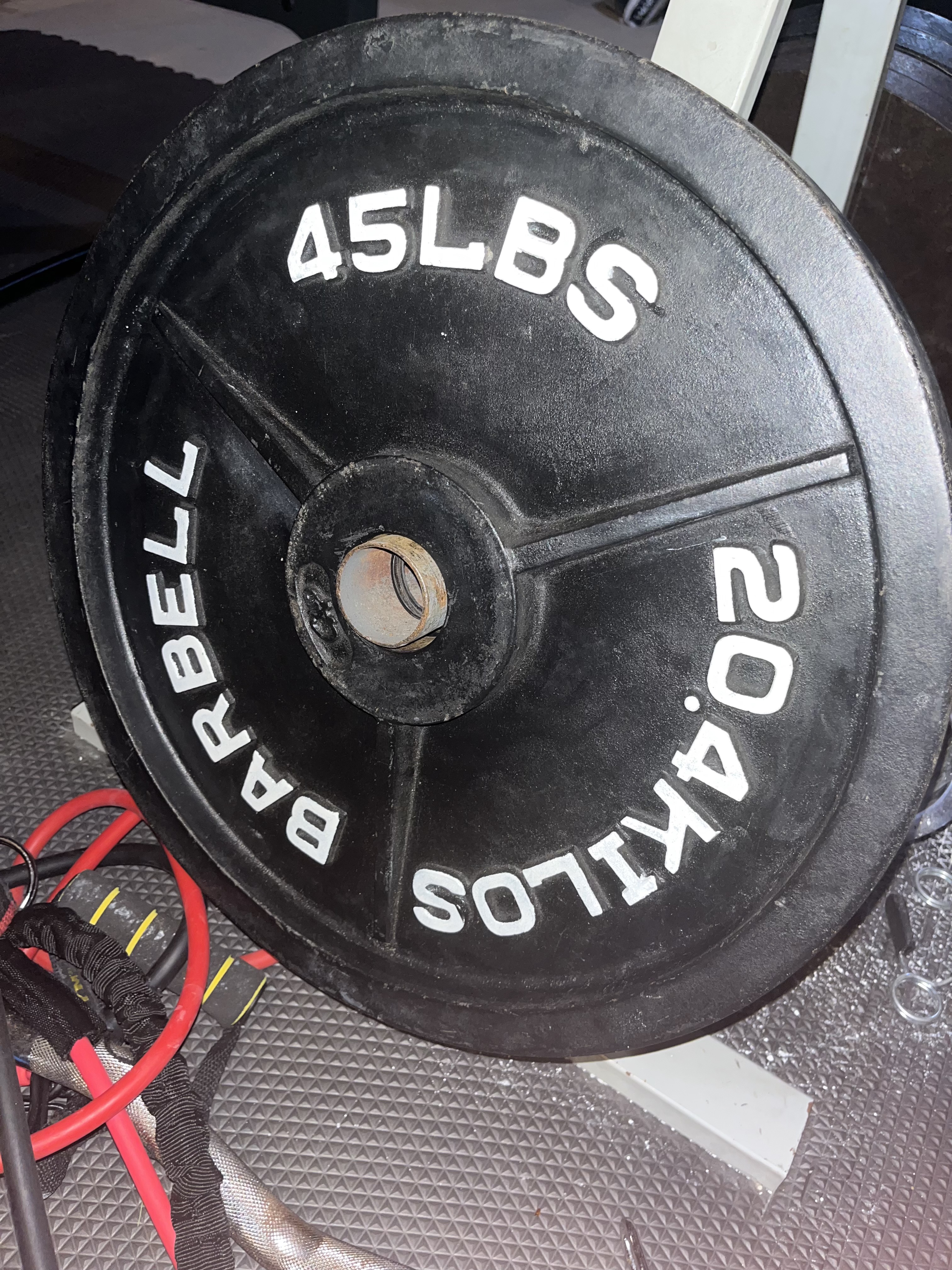Is The 5x5 Workout Program Good for Building Mass?
Written by The Boostcamp Editors
Low reps for building muscle mass?
When you are first starting in the gym, or even just looking to switch up your training routine, chances are a new training program is just what you need. When you look into new training programs, a lot of times they will incorporate the 5×5 strength program. It is one of the most popular training programs in the industry, whether it be for powerlifting or something else such as bodybuilding. The bodybuilding legend himself, Arnold Schwarzenegger even praises the 5x5 workout routine in his book, the Encyclopedia of Modern Bodybuilding.
Now, while there is plenty of praise and popularity surrounding the 5x5 programs, there is just as much criticism for its volume, saying that it is not enough to build muscle and strength. When it comes to training volume, there still does not appear to be a definite answer in terms of what the sweet spot exactly is for muscle growth. The original understanding was that the number of reps completed determined the outcome of your workout, and what we mean by that is the idea was that low reps under a heavy load developed strength whereas high reps under a low load would improve muscular endurance.
The idea has long been that 1-5 reps is for strength, 6-12 reps is for hypertrophy, and 12 or more reps is more or less for cardio. But, as stated above, for a number of years, 5 sets of 5 reps has been seen as the gold standard for strength training, making it popular amongst many powerlifting programs, but is it effective for bodybuilding?
Overview
What is the 5x5
Optimal Volumes
5x5 Programs are not the Only Programs
5x5 Workout Programs Wrap Up
What is the 5x5 Workout Routine?

The name is fairly self explanatory, but a 5×5 workout usually involves 5 working sets of 5 repetitions of a certain exercise, which is a lot of times the squat, bench, or deadlift, but this can be used for just about any exercise. The main goal is to build strength in compound movements by adding weight every time you do the workout, as these 5 sets of 5 reps are with relatively heavy weight, so that fifth rep of each set is pretty tough, reaching close to muscular failure. With a program like this, you really should not do this more than 3 times a week, as the rest days in between workouts are crucial to encouraging muscle growth
One quick internet search of strength programs will yield many results featuring the 5x5 program. A large number of people use this as a base, as it is a common view that the 5×5 is the optimal combination of load and intensity for building strength. But can this be a good volume for building muscle mass and promoting hypertrophy?
Optimal Training Volumes
As stated above, it is largely unclear just exactly how much volume is ideal for building muscle mass. You have to keep in mind that everyone is different, so what might work for one person can have zero benefits for the next. There is a very long standing belief that in order to build muscle mass you need to utilize a rep range of 6 – 12 reps with every set you complete. This would mean that completing the 5×5 strength program would be beneficial for building strength, but it would not be the best for building muscle or promoting hypertrophy.
The solution to this, in theory, would be to use heavier weights when you are completing the 5x5 strength program, making sure you are utilizing a good mind-muscle connection, and this would help boost hypertrophy. This is because when you are using heavy weight during your sets, there is a large degree of muscle recruitment required to not only complete the movement, but also to stabilize you throughout. Another potential benefit of using heavier weight is that there is a better chance of using better form, because you are not being fatigued nearly as much as you would be with high repetitions.
On the flip side, as more data from recent studies has been released, there have been more suggestions that the number of reps completed may not be as impactful on muscle growth and hypertrophy as we had thought it was for so many years. Both low and high reps appear to have a similar impact on the muscles, which completely goes against the longstanding beliefs of each rep range being more beneficial for different goals.
Another shocking recent study had come to the conclusion that heavier weight accompanied by lower reps was more beneficial than higher reps and lower weight for building muscle. To give a brief overview, the research involved placing participants into two separate groups. The first group was tasked with completing 4 sets of 10-12 reps per exercise. On the flip side, the second group completed the same exercises using 3-5 reps per set, and a heavier load.
At the conclusion of the 8 weeks of training, it was rather unexpected. It was found that those performing 3-5 reps put on a greater amount of muscle mass than the group who participated in sets of 10-12 reps. The subject of ideal rep ranges for putting on muscle mass will undoubtedly go on for the rest of time, but it is interesting that this most recent research has pointed to the conclusion that lower reps and heavier weight are ideal for putting on muscle mass.
What does all of this have to do with a 5x5 program? Well, it goes to show that a 5x5 program could potentially be good for muscle growth, much better than originally thought, and it is not just for building strength.
5x5 Programs are not the Only Programs
While a 5x5 program has proven itself to be beneficial for both strength and size, it is not the only program out there. Basically, do not just do 5x5s on every lift you come across. Instead, look to vary up your rep ranges and workloads. Many times people will do 5x5s on things like the squat, bench, and deadlift, then focus on higher volume for accessory or isolation movements. Do not be afraid to utilize training techniques such as drop sets, super sets, giant sets, and so on.
You can even switch up your workouts from week to week. For example, if your goals are to look for size, one program that we offer is the KONG: Savage Size in 12 Weeks program.

Here is what each week looks like:
Week 1-4: Volumizing
Week 5-8: Pyramids
Week 9-12: Reverse Pyramid
The exact workout can be found right in our app, and while this is only one example of a good workout program, there are plenty to choose from. What we are saying is, while it is found to be very beneficial for size and strength, the 5x5 workout program is not the only answer!
Finding Programs on Boostcamp: The Last Lifting App You’ll Ever Need
To help you find some new 5x5 programs and maximize your strength and muscle gains, consider using the Boostcamp App. The Boostcamp app offers free science-based workout routines, advanced custom program builder, and a workout tracker to help you stay on top of your progress. By using the Boostcamp App for your training routine, you'll have all the tools you need to develop a strong mind-muscle connection and break through plateaus. Download the Boostcamp App today and take your workouts to the next level!
5x5 Workout Program Wrap Up
Overall, there are not many workout programs you will find on the internet that will exclude a 5x5 day at some point in the regimen or lifting cycle. Science has been so back and forth on how beneficial 5x5s are for many years, and that research will probably go on for the rest of time.. The bottom line is, the 5x5 program has been found to be beneficial for both strength and size, but it is not the only solution.
There are plenty of workout programs out there to help you get to your goals, and Boostcamp has a ton right on our site for FREE! Will you be making progress through any of our workout programs?
Let us know! And be sure to follow Boostcamp on Instagram and subscribe on YouTube!

References
Read, T. (2021, April 15). 5x5 workout: What it is and how you can benefit. Healthline. https://www.healthline.com/health/fitness/5x5-workout
Schoenfeld BJ;Ratamess NA;Peterson MD;Contreras B;Tiryaki-Sonmez G; (n.d.). Influence of resistance training frequency on muscular adaptations in well-trained men. Journal of strength and conditioning research. https://pubmed.ncbi.nlm.nih.gov/25932981/

